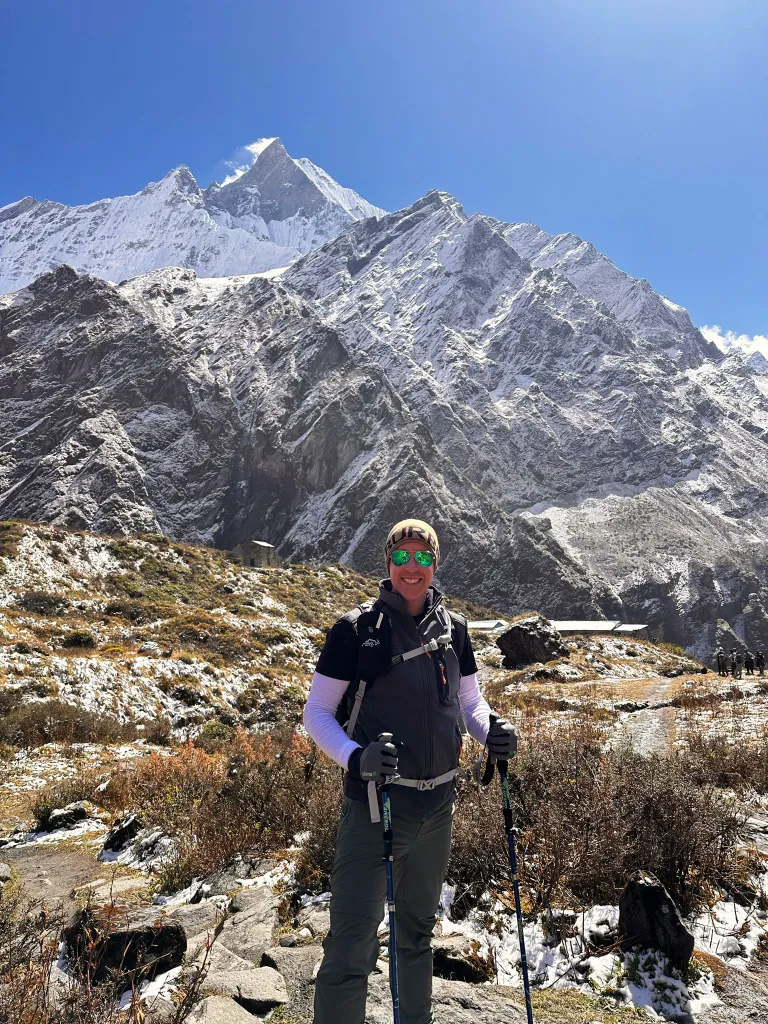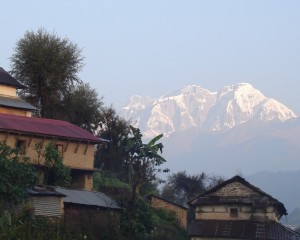FAQs about Travel to Nepal
1. Where is Nepal?
Nepal is a small landlocked country located in Southern Asia located as a yam between two big countries, India and China. Nepal is a blessed country geographically, naturally, and historically too. A country with thousand of snowcapped mountains, beautiful landscapes, and thousands of places, the Himalayas country Nepal is truly blessed.
- What is Nepal known for?
Nepal is known all over the world for being home to the highest mountain in the world, Mt Everest. Besides being the highest mountain in the world, Nepal consists of eight of the world’s 14 eight-thousanders. Nepal has been the center of great achievements in the world of peak-climbing expeditions. Trekking, Jungle Safari, Exploring beautiful places, and Adventurous other many activities can be experienced in Nepal.

- What are some of the best places to Trek in Nepal?
Nepal is full of thousands of destinations to trek. The wide range of places that you can choose to trek in is the Everest and Annapurna region. Some of the most popular trekking trails in this place are Everest Base Camp, Annapurna Base Camp, and Annapurna Circuit Trek among many of them. Besides, you can also check out the rarely explored trekking trails of Dolpo, Humla, Jumla, and Upper Mustang.
- Is Trekking in Nepal expensive?
The cost of trekking in Nepal is affected by multiple factors. Looking at the number of days you like to spend, the trekking region you select, and the difficulty level, the price for the trekking region is affected. The price ranges from US $100 to US $200 per day. Taking permits, the cost for accommodation, food, transport, guides, and porters are also included in this.
- Is Trekking in Nepal difficult?
Trekking can be categorized into three basic levels: Easy, Moderate, and Difficult. Trekking in the Himalayas areas often is rugged trails with not many facilities available, whereas sometimes severe problems like altitude sickness or natural calamities may occur. Besides, some places carry no risks like some smaller treks. Any physically fit person with a basic knowledge of trek won't find trekking in Nepal challenging.
- When is the best time to visit Nepal?
The most preferred time to trek to Nepal is during the spring season from March to May and the Autumn season from September to November. During this season, you can experience beautiful nature at its peak, blue clear skies, and mesmerizing views of mountains. The time during spring and fall is the time when Nepal is mostly crowded. Besides, winter and summer are also better times to visit Nepal looking for better weather conditions.

- How many days are needed to travel to Nepal?
A trip of 5-7 days is recommended to experience Nepal’s cultural and ancient highlights, where you can take the trip to Pokhara and Kathmandu. If you have the idea of trekking in your mind, you must take a vacation of 10-15 days to enjoy the beauty of the mountains and villages. Besides these, you can also take the 15-25days trip for a longer trek.
- Why Should I Visit Nepal?
Nepal is a place that is compared to the “Heaven on Earthâ€. The charming beauty, diversified topography, and the mix of multiple cultures is the reason that makes it a unique country, welcoming thousands of visitors to explore its beauty every season. The climate and weather being a plus point for its beauty, Nepal offers trekking and expedition to its different mountains and places, which is the most conducted activity in Nepal. You can also enjoy the dance and music that has been the culture of people for ages.
- Is Trekking Permit needed for travel to Nepal?
Most of the trekking destinations in Nepal require permits. Mostly, you must take a permit to enter the National Park region or Conservation Areas. If you are an outsider, the Permit is needed for your trekking trail that passes through any national park or conservation area. Certain remote areas of Nepal like Upper Mustang, Dolpo, Humla, and Kanchenjunga require a permit from the Nepal government for the border areas. Any Nepali travel agency can get the permit.
- How to stay healthy during a trek in Nepal?
The most important detail to keep yourself healthy during the trek is to balance your diet and water intake. You must make sure that you won’t take heavy junk and spicy food. Enough water is also a very important thing in the trek. The trek mostly goes for long hours of 8-9 hours which may cause some dehydration, and in such conditions, you must take purifications tablets. Taking tap water or groundwater may cause you to be sick.

- Where should we stay during the trek?
Most of the time in the trek to the mountainous regions, you’ll be staying in lodges, tea houses, or guest houses. Most of the trekking trails have tea houses some distance apart while there are only a few of the rare rural areas where you will have to set up tents for your accommodation. If the place you visited isn't crowdy, you can also get some of the luxurious lodges. Some of the places also offer homestays for spending the overnight.
- How far will you walk every day?
The duration of the route, altitude, and topography affects the walking distance. Also, for longer treks, you must walk long hours and it's the opposite for shorter treks. Like if you are trekking to some short treks like Annapurna Base Camp treks, you can walk for nearly 10-12km a day taking 7 hours on average but for longer treks, like, Everest Base Camp, you may need to walk longer or somedays for fewer hours too.
- What percentage should I give the porters and guide?
Tipping in the trek is your choice, not a compulsion. It largely reflects how pleased you were with the service. Hence, for this, a gratuity is often given to drivers, porters, and guides as much as you want to help them.
- Do I have to bring my equipment during the trek?
If you choose to bring a porter, your porter will transport the majority of your equipment, which might include additional clothing and nighttime necessities. Hence, you will only carry your daily necessities. Porters are much more useful and needed if you are going for long hikes. You can carry your baggage yourself if you are going for short hikes.
- Are Solo Treks Possible in Nepal?
Yes, you can trek alone in Nepal, but in some of the few restricted regions where a guide is compulsory, you can’t trek alone. However, you have a risk of getting lost in the snow on the off-seasons when you might need someone. Also, you are not advised to trek alone if you are a novice trekker.

- What is "teahouse trekking"?
Teahouse trekking is the very common practice of spending each night of your walk at a modest local inn or mountain hut. The place where you’ll be spending your night is simple, with 5–10 rooms and a communal area for eating and socializing. The majority of treks in Nepal are teahouse treks, which are often managed by the locals.
- Are Female Solo Travelers Safe In Nepal?
Yes, Nepal is a safe place for female solo travelers. The administration has taken all necessary measures to ensure their security. Despite this, it is important to adequately prepare for the hike in advance, keep your possessions to yourself, and dress conservatively.
- What happens if I become sick while on the hike?
The treatment you’ll be receiving while you are on a hike defers on your problem. Most altitude sickness cases are solved by returning to a few distances with medications if available. If your insurance has services, you might also be provided with helicopter service if needed. Your guide might have some common medications that can be much helpful for the smaller problems.
- What is the grading for trekking?
The word “grading†is often used to describe the trek; how challenging is the trek? The trek can be graded into four categories basic, Easy, Moderate, Difficult, and Strenuous. This can be further explained as:
Easy Treks
Easy Treks don’t need any prior expertise knowledge or physical training in trekking. A person with basic knowledge and little physically active can take the chance for an easy trek. For such treks, one needs to have a desire for walking only. Also, these treks are not longer than 2-3 days and don't go for higher altitudes.
Moderate Treks
These treks are a little more paced up than the easy treks. These treks entail walking for at least 6-7 hours per day that traverse above altitude 4000. The distance is quite long and tiring due to the difficult rocks, and stones. For this trek, you must have some desire to walk and take small challenges.
Difficult treks
These treks need some prior trekking knowledge and experience. The trek takes you to an altitude above 5000m with some traversing paths that go for 6-7 hours. This trek may contain some challenging passes, icy roads, pass through deadly forests, and many other difficult tasks. Some might face the problem of altitude sickness and cool temperatures.
Strenuous Treks
Strenuous treks are mostly long days, hours of walking, high altitude passes exceeding 5000m, high terrains, glaciers/snows, and many other difficulties. For these treks, you must be in excellent physical and mental health condition. You might as well need to perform rock climbing and ice climbing, and take some gear with you. You must be prepared with the needed to be coursed before going for the trek.

- What can travelers purchase in Nepal to bring home?
There are a lot of things you can bring home from Nepal. Some of the best-known handicrafts like Pashmina, Nepalese art and craft, and Nepali musical instruments like the Madal and Banshuri are often chosen for souvenirs from Nepal. Nepali carpets are also well-known among tourists. You can shop in areas of Thamel.
- What are the wearables in Nepal?
Before coming to Nepal, you must know that it has a variety of weather, therefore it is best to dress comfortably and casually in both light and warm gear. Take some warm wool clothing for higher elevations and some cotton clothing that is best at lower elevations. Dress comfortably.
- Are ATMs available in Nepal?
Yes. Very Easily. The city areas of Nepal have many ATMs whereas you can find ATMs in some rural areas too.

- Do I need to learn Nepalese to travel there?
No. This is a myth. The majority of the people speak Nepali in Nepal as it is their mother tongue. Major people in urban areas speak English whereas most of the people can help you in English which means you don't need to learn Nepali.
- Is it safe to travel to Nepal?
Yes! The country is safe as no extreme organizations or religious radicals are upsetting the tranquility of the nation. Compared with many nations in the world, Nepal is much safe. Also, tourism is the economic backbone of the nation with people being friendly and inviting always.
- What mementos may I bring back from Nepal?
Nepal is a very cultural and historic country. You find many souvenirs and gifts to take from the country that can be a memory for you. A variety of handicrafts, Nepalese arts and crafts, pashmina shawls, and instruments are authentic gifts to take. With the beautiful memory of the mesmerizing views, snow-capped mountains, and the adventures you faced, you can take so many memories going back from Nepal.






